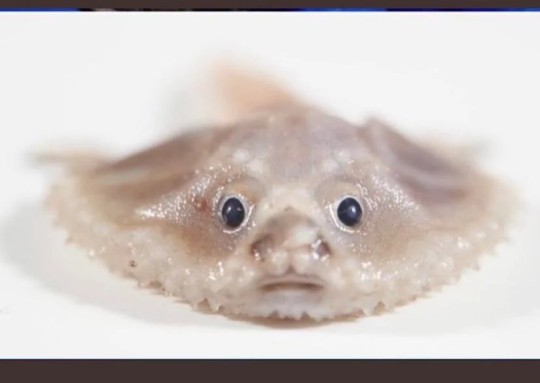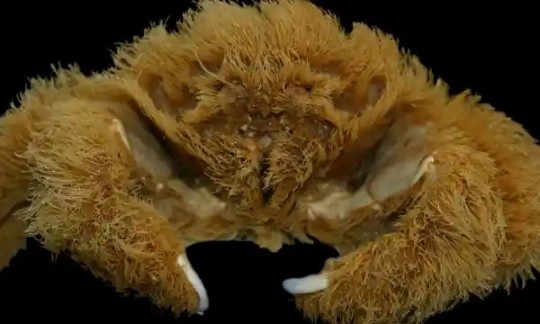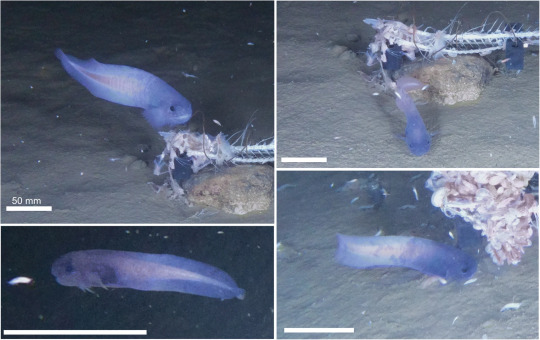#liparidae
Explore tagged Tumblr posts
Note
whats your favorite underwater creature to draw?

Snailfish are cool
397 notes
·
View notes
Note

AGAIN ?!?
GNAG I JUST WANTED MY CLOSE MOOTS SO BE AT THE TOP OF MY FOLLOWING LIST SO I CAN GET TO THEM FAST. I PROMISE!!!!!!!!!!!!'!!!!
45 notes
·
View notes
Note
AHHH OMG AHHHHHHHHJ
I would put baby leo in a jar, fill it with water and make him into snowglobe

Pls do not the turtle
456 notes
·
View notes
Note
Ok, I've got three funky fishies for you!
First is the snailfish! Specifically the deep sea snailfish.
It was found at a depth of around 8,336 meters (scientists also physically caught two other specimens at around 8,022 meters) found around August 2022


Info online is a little questionable, as I'm sure you know, but I'm pretty ( I wouldn't bet money on it as only one article said so) sure these are juvenile. These guys are called the Liparidae scientifically, which is classified within the order Scorpaeniformes. Snailfish prey can be grouped into six main categories: gammarid, krill, natantian decapods, other crustaceans, fish, and others. It really just depends on how big these weirdos are.
Next little weirdo on the list: deep sea batfish
They feed on invertebrates, bivalve molluscs, sea spiders, brittle stars, starfish, and worms.
It's about 39 cm, and it can be found at a depth of about 45-1300m

Look at him! Like a little dumpling, I wanna eat it!
Fishie number 3!: Fluffy sponge crab
The new species, Lamarckdromia beagle, belongs to the Dromiidae family. Of course, it was found in Australia (western). commonly known as sponge crabs, crustaceans in this family fashion and use sea sponges and sea squirts for protection. They trim them using their claws and wear them like hats!
No, you can't eat them :(
The sponge crab is a scavenger, eating dead plants and animals that it comes across (at least they recycle!)
the sponges help the crabs to camouflage from predators such as octopi and other crabs.


Hope you enjoyed learning a little (hopefully correct) info about these guys as I did!
OMGGG I LOVE FINDING STUFF THAT GROWS ON CRABS BACKS!!! ITS SUCH A COOL LITTLE THING NATURE MADE UP AWHWAHAWHHAWHAW
also that batfish really does look like a dumplings :O
8 notes
·
View notes
Photo

A recently discovered deep sea fish from the Atacama Trench, a large trench near the coast of Chile and Peru, in the west coast of South America, sheds light on how fish species colonize deep sea environments.
Reaching the size of a hand, this deep sea fish is named Paraliparis selti, and is related to southern ocean species rather to typical deep sea snail fishes, according to molecular and micro computed tomography analysis. The genus Paraliparis is abundant in the Southern Ocean, as well in the Antarctic, but surprising, this fish is the first member of the genus found in the hadal zone, at 6500 m depth.
This trench is poorly explored, in 2018, three snailfishes, similar looking to Paraliparis selti, were discovered.
Photo: In situ still images of P. selti sp. nov. taken by baited camera at 6520 to 6714 m depth. Scale bars 50 mm
Reference: Linley et al. 2022. Independent radiation of snailfishes into the hadal zone confirmed by Paraliparis selti sp. nov. (Perciformes: Liparidae) from the Atacama Trench, SE Pacific. Mar. Biodivers.
Photo description: Four different footages of the Paraliparis selti. This fish is blue, scaless, present large eyes and a body elongate. In the images, is shown swimming near the bottom, eating a fish carcass.
#chile#peru#atacama#atacama trench#liparidae#paraliparis#paraliparis selti#new species#marine science#science#marine biology#sciblr#bioblr
353 notes
·
View notes
Note
can i request some mollusks .. specifically snails bc good god i love those guys





Snails of the Land and Sea. Written / illustrated by Hilda Simon. 1976.
143 notes
·
View notes
Photo



Swimming with the Mariana Snailfishes
The Mariana Snailfish (Pseudoliparis swirei) Is one of the deepest-living fishes in the world. It is native to the Mariana Trench in the Pacific Ocean, and is found at depths of 6,000 to 8,000 meters. At that point, the pressure is almost 600 atm, or the equivalent of 1,600 elephants per square inch. Beyond this point, certain proteins begin to break down and bones can be crushed. However, the Mariana Snailfish has several adaptations that allow it to survive, and even thrive, at such pressures.
For starters, P. swirei’s skeleton is not completely ossified. This means that their bones are not fully calcified, but consist mainly of cartilage, which gives snailfishes some flexibility. There are also gaps in its skull to stabilize the pressure. Furthermore, to prevent proteins in its body from breaking down, the Mariana Snailfish has a special chemical called trimethylamine N-oxide which stabilizes proteins. Most animals have one gene to produce this compound; Mariana Snailfishes have five genes. Because of this, they can also produce larger amounts of proteins to counteract the effect of pressure on the ability to move chemicals from one cell to another. Finally, like many other deep-sea organisms, these fishes lack functioning eyes and almost completely lack pigment.
Although it’s small, at anywhere from 6 inches to just under a foot, the Mariana Snailfish is also the top predator of the Mariana Trench. They feed primarily on crustaceans and arthropods along the ocean floor, although they are also known to consume carrion or small fish when given the opportunity. Their eggs are similarly proportioned, with diameters of up to a third of an inch, in large clutches of almost 900. Out of all of these, only a handful are typically mature, and it is unknown if Mariana Snailfish provide parental care or what juvenile growth is like. In fact, very little else is known about the Mariana Snailfish, due to its size and the extreme inaccessibility to its habitat.
Conservation Status: Unrated by the ICUN, due to lack of data. It is unlikely that the Mariana Snailfish is threatened.
#mariana snailfish#Scorpaeniformes#Liparidae#snailfishes#Ray-Finned Fish#Bony fish#deep sea fauna#deep sea fish#fish#marine fauna#marine fish#Pacific Ocean#mariana trench#biology#zoology
571 notes
·
View notes
Note
🌼 FOR THE PINTEREST RHING PLEASE !




Ok this one’s cool
11 notes
·
View notes
Video
youtube
Snailfish are flabby, scaleless fishes adapted to thrive in the deep
Snailfishes (family Liparidae) are a diverse and thriving group of fishes with over 400 described species. They have tadpole-like bodies with broad pectoral fins and tiny tail fins. Their pelvic fins are modified to form a suction cup allowing them to fasten onto rocks, corals, or research equipment, and hold tight in strong currents. They have been observed clinging to crabs where they may lay eggs inside the gill cavity of their host.
Snailfishes are found globally in all ocean basins, from shallow intertidal waters to the deepest depths of the ocean. They are among the most common fishes living in deep-sea trenches. In fact, the Mariana snailfish (Pseudoliparis swirei) holds the record for the deepest-dwelling seafloor fish (down to 8,178 meters or 26,800 feet).
These flabby, scaleless fishes are well-adapted to a variety of habitats, including rocky outcrops, the muddy seafloor, and even the midwater. They play an important role as prey and predator in many ecosystems. Most snailfish species are small and feed on tiny invertebrates, but larger species may prey upon other fishes. MBARI has observed over a dozen species of snailfish in the past 34 years of exploration. We suspect there are dozens more out there waiting to be discovered.
via: Monterey Bay Aquarium Research Institute (MBARI)
25 notes
·
View notes
Text
Sense everyone loves the blob fish
Let me introduce you to his cousin

Snailfish
Also know as the Liparidae
8 notes
·
View notes
Link
0 notes
Text
@liparidae
i made a concept shirt for my favorite gay necrophilia movie

two people on earth paid actual human money for my joke gay necrophilia shirt jesus christ
10 notes
·
View notes
Text
Booting up a new beginning . . .
WELCOME TO:
FISHCITY ⋆。𖦹°࿔*:・ 🫧🐳



🐟I am your mayor, Atomic/Tomi/Aqua. Here in fish city we open up new opportunities and a completely new life style. Your safety here is OUR priority! (Please report concerns to the city hall or to any of our staff members, thank you.)🐟
Now if you would just go through our REQUIRED security check…
You haven’t happened to have smuggled weapons in here.. right?


Check this out!
YOURBEAUTIFULAWESOMEMAYOR🥝 JAMS4MOOD🍊 FILL ur ID!🫐 PRONOUNS🍓 S0NA🍏 M4P0FTHECITY🍇

INTERACTING WITH THE MAYOR 💧🐠
Before I go on I will make it very clear that I am a MINOR! I am open to talking to **almost** anyone and I love interacting w/people on here, just pls follow my DNI. If you dislike me or my content it’s as simple as pressing a few buttons, just block! I use he/her pronouns and would love if you use tone tags 4 me pls!
Don’t get me invovled in your drama! Keep it to yourself!
DNI ⛔️
Absolutely no racism, tcest, NSFW/18+, ableism, homphobia, or proshipping.
INTERESTS 🩵🫧
✧ ROTTMNT
✧ ADVENTURE TIME
✧ SHARKS
✧ RATS
✧ ISOPODS
༄ؘ ۪۪۫۫ ▹ Feel free to tag me if you would like to share things!

FishCity employees!👥⭐️
THE BOTANIST
THE TRAIN CONDUCTOR
THE MAYOR AND.. LAB DIRECTOR (design)
MORE BELOW.
OUR ST4FF (aka friendos)🌍🌊
#Grimpoteuthis🌸: @splatting-stampede
#Amphiprion🍊: @rawcherrycake
#Dasyatis pastinaca☂️: @urplepurplegurgleturgle
#RRR🍎: @wadetaco
#Liparidae🍧: @koolaidashley
#Glaucus atlanticus🦋: @cupofcappuccy
#kanatashinkaifrekay💙: @kirex-cxvi
#Jorunna Parva☁️: @cin3maa
#Aurita Aurelia🌊: @sourfunstrips
DTIYS!🖼️
500 dtiys
700 dtiys




92 notes
·
View notes
Photo

MARIANA SNAILFISH: THIS PALE PINK AND CUTE IS DEEPEST FISH KNOWN TO SCIENCE
After recorded them in video in 2014, researchers have described the world's deepest fish. Named Mariana snailfish (Pseudoliparis swirei), the new species lives in the ocean region known as the hadal zone, one of the deepest area in the ocean. Believe to be endemic of this area, between 2014 and 2017, researchers collected 37 individuals in the Mariana Trench, from 6,900 m to 7966 m depth, now the results are published in the journal Zootaxa.
Prior to its formal scientific description, a Japanese expedition recorded also a snailfish of the Marianas at depths of 8,178 meters ( gif above, probably the same species), the deepest sighting so far and quite possibly the greatest depth a living creature can bear, biologically speaking. To resist the pressures at deep ocean environments, fish produce a substance called osmolyte, which helps cells maintain volume and fluid balance. Nevertheless, fish can not produce any of this substance below 8,200 meters, which is why scientists say that, at least theoretically, it is hard to find fish below this threshold. Curiously, snailfish live above this limiting edge.
GIF: JAMSTEC Channel
Reference (Open Access) Gerringer et al., 2017. Pseudoliparis swirei sp. nov.: A newly-discovered hadal snailfish (Scorpaeniformes: Liparidae) from the Mariana Trench. Zootaxa
#GIF#open access#Pseudoliparis swirei#snailfish#liparidae#Scorpaeniformes#actinopterygii#new species#mariana trench#science#marine biology#marine science#biology#animals#fish
397 notes
·
View notes
Note
YEAHHHH WHS HE SILLY 🗣️🗣️🗣️🗣️🗣️🗣️

donnie with his big NERD glasses

Donatello HUGE GLASSES Hamato
164 notes
·
View notes
Text
Three new species of fish discovered in the extreme depths of the Pacific Ocean
New Post has been published on https://cialiscom.org/three-new-species-of-fish-discovered-in-the-extreme-depths-of-the-pacific-ocean.html
Three new species of fish discovered in the extreme depths of the Pacific Ocean
An exploration to just one of the deepest areas on earth has captured exceptional footage of what is thought to be a few new species of the elusive Snailfish.
Involving a workforce of 40 researchers from 17 unique nations, including Dr Alan Jamieson and Dr Thomas Linley from Newcastle College, United kingdom, the expedition to the Atacama Trench has uncovered a prosperity of information about daily life in one of the deepest spots on earth.
Among the the new discoveries are what the staff believe that to be three new species of snailfish.
Temporarily named ‘the pink, the blue and the purple Atacama Snailfish’, the footage shows the fish feeding and interacting in their key environment 7,500 metres under the area.
These fish are part of the Liparidae loved ones and do not conform to the preconceived stereotypical graphic of what a deep-sea fish need to seem like.
Alternatively of huge tooth and a menacing body, the fishes that roam in the deepest sections of the ocean are little, translucent, bereft of scales — and very adept at residing exactly where couple of other organisms can. The snailfish will be featured as section of the Challenger Conference 2018 which kicks off at Newcastle College from now and operates until eventually Friday.
Dr Thomas Linley, from Newcastle College, claimed:
“There is a little something about the snailfish (fish of the family Liparidae) that will allow them to adapt to residing pretty deep. Past the attain of other fish they are free of opponents and predators.
“As the footage clearly displays, there are plenty of invertebrate prey down there and the snailfish are the prime predator, they look to be rather energetic and appear pretty perfectly-fed.
“Their gelatinous composition indicates they are perfectly tailored to living at severe strain and in fact the toughest structures in their bodies are the bones in their interior ear which give them balance and their teeth. Without the need of the extraordinary force and chilly to help their bodies they are exceptionally fragile and soften rapidly when brought to the surface area.”
Incredibly, the crew did regulate to catch one the new species of snailfish which followed its amphipod prey into one of the traps. The one specimen was in pretty excellent condition and, pursuing watchful preservation, is at present getting explained by the Newcastle workforce with the support of colleagues from the United States and the Normal Record Museum, London.
Revolutionary engineering for exploration of the extremely-deep
The Hadal Trenches are one particular of the final fantastic frontiers in maritime science and the deepest places on Earth.
Mainly positioned all around the Pacific rim in parts where tectonic plate collide and plunge, the seafloor reaches depths near to 11,000 metres (~7 miles) in some spots.
The Atacama Trench, a trench almost 6000 km extended and more than 8000 m deep, runs alongside the west coastline of South America.
Newcastle University scientists and engineers have been groundbreaking technological innovation for the exploration of these extremely-deep environments for the previous five many years and have to date done just about 250 deployments of their novel ‘lander’ methods.
Making use of two full-ocean depth (11,000 m) capable landers geared up with Hd cameras and traps the Newcastle workforce assessed the animals located within just the trench.
Made and designed at Newcastle University, the lander is dropped overboard, and cost-free-falls to the ocean ground the place it carries out a wide variety of checking and sampling responsibilities.
It can consider 4 hours for a lure to sink to the base and immediately after waiting an additional 12 to 24 several hours, the scientists deliver an acoustic sign to the trap, which releases weights and the lander rises to the floor with the assist of floatation.
This enables the team to catch fish specimens and get online video footage of lifetime at the bottom of the ocean.
On this most recent expedition to the Atacama Trench in the SE Pacific off the coast of Peru and Chile, the group deployed their baited camera system 27 periods from 2537 to the deepest place, Richard’s Deep, at just around 8000 metres.
Additional than 100 hours of online video and 11,468 photos have been taken at the seabed.
As effectively as the snailfish, the crew also filmed some astonishingly scarce footage of extended-legged isopods, identified as Munnopsids, which are about the dimension of an grownup hand.
These crustaceans have small bodies, terribly extended legs and swim backwards and upsides down, propelling on their own with paddles on their ventral facet — their ‘tummies’ — just before righting by themselves on the seafloor and spreading their extended walking legs out like a spider.
“We do not know what species of munnopsid these are but it truly is unbelievable to have caught them in motion in their pure habitat — primarily the flip they do as they swap from swimming to strolling manner,” claims Dr Linley.
Source backlink
0 notes